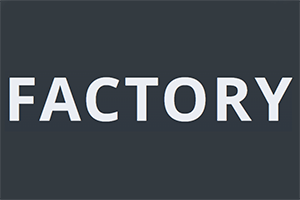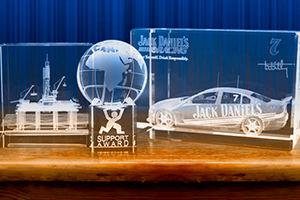Manufacturing Software — Outsourcing Essentials
Let’s start by defining manufacturing software. What does this mean, exactly? Is there a concrete list of apps associated with this term? And is there a more official name for it? “Manufacturing software” is a bit ambiguous, after all.
So here goes: manufacturing software refers to a set of apps that covers every task a business could ever face. It comes under the umbrella of an Enterprise Resource Planning System (ERP), which covers both, manufacturing and service businesses.
In spite of the broadness that a name like “ERP” implies, it shouldn't scare you too much. In the real world, the term could refer to something as small as a system of just 2—3 apps associated with a few easily-defined tasks required by the manufacturer.
The word system means that there are, or could be, several tools. For example, let’s say these tools are inventory management and a production scheduling app, and that they are developed in such a way that they can smoothly interact not just with each other, but also with any apps the company is already using (assuming the business owner wants to continue using them).
Custom or off-the-shelf: which is best?
With an ERP, you have the option to buy an off-the-shelf ERP solution or develop a custom solution from scratch. At Sibers, our answer is to pursue a custom solution that reflects the unique way with which each manufacturing company performs its primary business processes (i.e. the manufacturing itself, customer relations management, etc.), while simultaneously using ready-made components that can automate “standard” business processes for which customization isn’t as important. Examples of these include accounting, which is easily managed with Quickbooks, and shipping, which could be facilitated by an app like EasyPost API for integrating with UPS, Fedex, DHL, etc.
Thus, you would receive from Sibers a custom-made solution based on your company’s unique experience, but without reinventing the wheel. This kind of “combo solution” is very easy to exploit, and it’s highly effective.
Another upside to going this route is that you can start from basic features and then expand the solution. Better to have a solid foundation first instead of diving into something complex that requires constant tweaking while you’re still paying money for subscription.
And, last but not least, there’s the advantage of cost: by developing your solution from scratch, you can spread out the initial expenses.
Planning a custom solution: dealing with the present and facing the future
When planning an ERP build, bear in mind that as time passes you’ll probably want the solution to solve an increasing amount of tasks, or to solve the initial tasks in a different way. And it’s pretty much a given that you didn’t even imagine at least some of these methods when the initial build began. Honestly, this happens to every manufacturing company that has asked Sibers to create apps as part of an “ERP set”. And when you think about it, there are logical reasons why the to-do-list always expands:
- As time passes, and a successful business grows (which is excellent!), it acquires new responsibilities and opportunities,
- A business owner might decide that certain daily operations require too much time and money for his employees to perform manually, and so he opts to digitize these operations, thereby imbuing the ERP with new functionalities,
- Generally speaking, the business world is always changing. Suppliers come and go, manufacturing technologies evolve, and new legislations appear, so it’s important to anticipate change and stay ahead of the curve
The good news is that a custom ERP system is malleable, changeable, and ready to expand and move in whichever directions your business decides on.
The process of building a complex system begins with a single app that addresses the most urgent task the business faces. When this is done, we continue developing new features (some of which, as noted above, weren’t planned at the beginning). This deliberate, step-by-step process is the most efficient, most cost-effective approach.
In order to ensure the solution’s future scalability, the only condition we must decide on at the very beginning is the right architecture. This is the most crucial milestone in ERP system development.
What do we mean by, “the right architecture”?
Let's say you’ve decided to pursue a custom solution and have asked an outsourcing provider to develop an ERP. How can you be confident that the provider knows the ropes of ERP architecture?
The first and obvious criteria is experience. This is the only way to develop a deep understanding of any concept. Also, there are some “keywords” (explored in more detail below) that experienced outsourcing providers will know how to use when creating the right ERP architecture.
Also important to know is that even in the face of myriad criteria, the overarching aim when developing a large manufacturing-focused ERP system is to make things easier. And the best way to do this is by dividing the “whole” into pieces, thereby reducing complexity.
Multilayer architecture is the main keyword — or more specifically, three-tier architecture/MVP, which stands for Model-View-Controller. This is already an industry standard, so it’s a must-have. MVP ensures flexibility and scalability, with properly-layered architecture containing isolated layers that aren’t affected by certain changes in other layers. Thus, the app is clear and easy to modify.
The second keyword to consider when dividing the whole system into pieces is microservices architecture. This is about dividing the business layer into functional parts or services. For example, it could be a “customer”, “product”, “service”, or some other entity that could be “called” from any structural part of the solution. Being autonomous to the max, it could quickly and easily be changed if needed.
And lastly, when it’s time to deploy the final structure, consider doing it in the cloud (keyword #3). Along with scalability and easier/less-expensive disaster recovery, the cloud increases opportunities for collaboration and flexibility, and provides some out-of-the-box functionality. But before deciding, an experienced software outsourcing provider will help you weigh the pros and cons of in-house server support vs. a cloud-based server, and confirm which one is best for your unique situation.
These three keywords are meant to make your solution scalable, keep the code well organized, and ensure the happiness (and sanity) of everyone involved.
What to automate first?
How do you decide which manufacturing process you want to start building your ERP solution with? There are lots of variables to consider. For example, you might want to:
- Replace certain manually-performed labor and/or clerical tasks
- Create an online, real-time, editable employee schedule
- Automate your inventory and supply chain management
- Streamline invoicing, shipping, billing, and accounting (one by one)
- Or, perhaps bravely take on the development of an entire vendor management inventory (VMI) system?
Some companies choose to start with solutions that explicitly reduce unit product cost. Others want to motivate their staff, or facilitate smoother client interaction/maintenance. Some prefer to start with the processes that represent their biggest pains in the butt. Ultimately, it’s your choice where to begin — but we recommend starting with something that addresses several issues. This will make your life a lot easier right from the start!
Sibers’ manufacturing experience
Sibers has several years’ experience building cutting-edge ERP systems for manufacturing companies. We’re well‑versed in digital data operation and the design of systems that can collect, store, manage, and interpret huge amounts of data, and generally make anything possible.
One of our current projects is an ERP for a manufacturer of premium-quality folding cartons. This company has a rich history and customers worldwide, and it operates in dozens of industries — from FMCG and pharmaceuticals, to high‑tech. Our solution, which already consists of 10+ modules, is designed to optimize virtually every manufacturing process, helping our client to smoothly plan their production and consistently meet their customers’ expectations.
Sibers is also working on an order management system for an embroidery shop, and we’re collaborating with the U.S.’s most-awarded digitizing team. Besides the system’s ability to simplify communication, artwork approval, and repeat-order management, it also automates the client’s entire shipping and billing processes.
Want to learn more about our strong track record of developing innovative technology solutions for the manufacturing industry? Check out our Case Studies.
Featured case studies developed for Manufacture industry
Need a development team for your manufacturing business?
Request a quoteWhitepapers
- Building MVP for Startups
- Architecture: Why Does it Matter?
- Functionality vs. Classy: The “90/90 Percent” App Rule
- The Essentials of Custom Development for Printing Businesses
- IT Projects: It Takes Two To Meet A Deadline
- E-Learning Evolution: Custom E-Learning Development Trends
- Getting iOS App Crash Logs
- You Asked, We Answered: Testing, Debugging, and What on Earth Does “Best Practices” Really Mean?
- The Limits of Perfection: Where Pixel-perfectionists Need to Stop and Think
- Software cost estimation: What factors are key in IT project estimates?
- Why go outsource?
- DIY: When Does It Make Sense?




